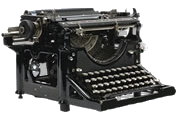The American A-20 Havoc
(Yank Magazine, 1944)
An enthusiastic Yank Magazine article about the Douglas DB-7/A-20 Havoc (the British called it the A-20 Boston): throughout the course of the war, there was no other attack bomber that was manufactured in greater quantity than this one (7,477).
An eyewitness report of a pre-invasion mission over the continent in one of the newest and most effective U.S. air weapons, an attack bomber that looks like an insect but moves and hits with the speed of a meteor…
